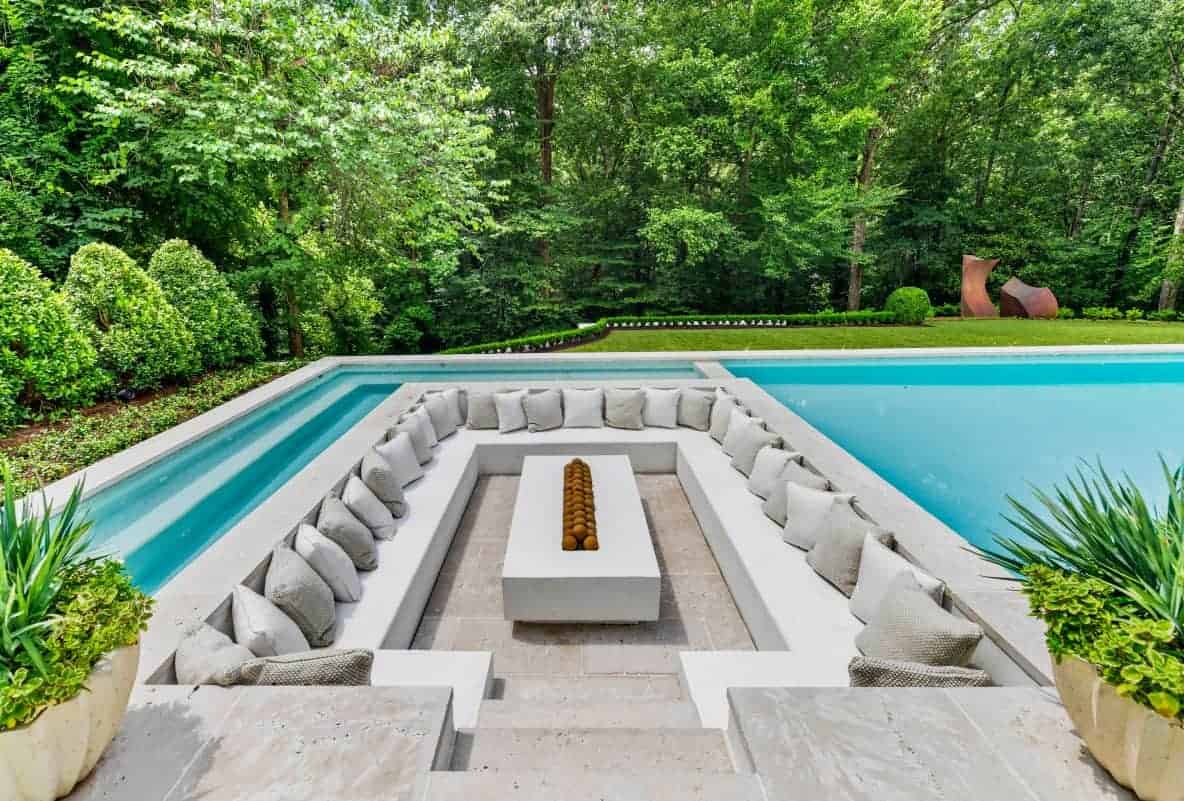One question that comes up often when discussing concrete pavers is whether they are made from wet cast or dry cast concrete – and whether one is better than the other. Both wet cast and dry cast pavers have their purposes and advantages, depending on how they will be used. So the real question is – which one is right for your project?
Let’s dive into some of these details, talking first about how concrete is manufactured, then discussing the differences between the wet cast versus dry cast process for making concrete pavers and how they may be used.
A Brief History of Concrete
Humankind has been using some form of concrete as a building material for more than 5,000 years; concrete played a role in developing architectural marvels such as the Egyptian pyramids, Colosseum, Roman aqueducts, and many others. However, it wasn’t until after the 1820s, with the invention of Portland cement, that concrete began to come into wider use in the modern world.
From the late nineteenth century into the twentieth century, architects and designers began using concrete in bridges, then on roads, finally for constructing buildings, dams, and other large structures.
By the 1950s, processes were developed for casting and stamping decorative concrete, introducing the first concrete pavers for design purposes in the 1970s. Almost all concrete today consists of some combination of water, Portland cement, and aggregate material like gravel, stone, or sand.
Wet Cast and Dry Cast Concrete
To explain the differences between wet cast and dry cast pavers, we must first talk about a characteristic of concrete called slump. Slump is the consistency of concrete before it cures, based in part on how much water is used in it.
The term is derived from pouring the concrete into a mold, removing the mold, and observing whether the concrete holds its form or “slumps.” Concrete with a high slump is effectively pourable; it’s what we typically see in mixing trucks and hoppers.
Concrete with a low or zero slump holds its shape immediately after the mold is removed. (Think about wet sand at the beach when you’re building a sandcastle, and you’ll have the basic idea.)
Understanding what slump is, we can now tell you that wet cast versus dry cast concrete has to do with how much water is in the mix and how much slump each type of concrete has. It also informs how pavers are made from them.
Wet Cast Pavers
As the name suggests, wet cast concrete has a higher water content in the uncured mix, which means it has a high slump. Wet cast pavers are created by pouring the concrete into a mold, then vibrating it to release air bubbles. The concrete sits in the mold until it is cured (hardened), then the mold is removed, and the paver can be shipped.
Dry Cast Pavers
By contrast, dry cast concrete has zero “slump” and barely enough water consistency to hydrate the concrete. Making pavers from dry cast concrete requires heavy, expensive machinery to compress it into a mold by applying tons of pressure, removing the mold, and allowing the paver to cure.
Dry cast pavers are also rougher, coarser, and more porous in texture, which means they cannot emulate the look and feel of a range of stone types (other than limestone and granite). The dry cast process also only allows for only a limited scope of colors.
The Advantages of Wet Cast Pavers
Peacock Pavers are manufactured with a wet cast process using only the highest grades of recyclable concrete. This is to ensure we offer our clients the most versatile and decorative properties that concrete offers. Advantages of wet cast pavers include:
- More versatility with finishes. Wet cast pavers can be coarse or smooth in texture, and they can be made to emulate various types of stone.
- More variance with colors. Wet cast concrete supports a greater range of pigmentation, so designers have more color options.
- More decorative. Wet cast concrete easily fits the shape of any mold (including any stamps or imprints), allowing for ease in creating different paver shapes, sizes, and textures.
Which is Best for Your Project?
The choice of wet cast versus dry cast pavers comes down to factors like cost, appearance, and use. Dry cast concrete pavers may sometimes be used to achieve a certain look in residential projects. Still, they are most often suitable in larger-scale commercial paver projects where the pavers may be subject to high traffic and heavy loads.
Wet cast pavers are usually more preferable in residential projects because they provide a better aesthetic when creating indoor and outdoor spaces; they offer more design options and are durable enough to handle wear and tear.
To learn more about the benefits of using Peacock Pavers wet cast pavers, contact us to receive a specialized quote for your next project, or obtain a sample pack.
 |
| 
